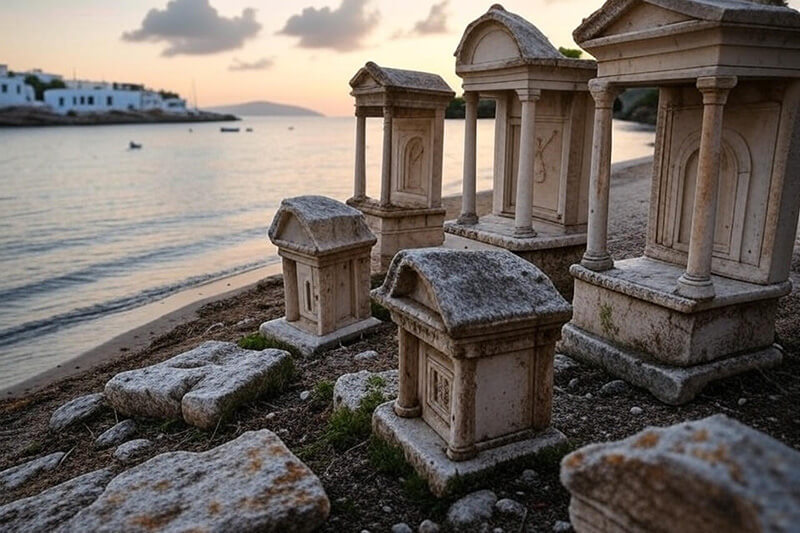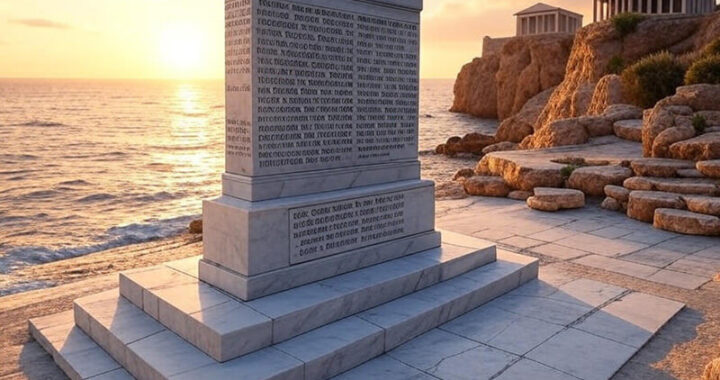In ancient Greece, people built cenotaphs—empty tombs—for those who died far from home. These tombs often stood near the sea. This placement was not random. It reflected the way Greeks viewed death, the soul, and the sea.
What Is a Cenotaph?
A cenotaph (pronounced sen-uh-taf) is a tomb with no body inside. The word comes from Greek: kenos means “empty” and taphos means “grave.” It honored those who died in war, at sea, or in far-off places. When a body could not be brought home, a cenotaph gave the family a place to grieve.
The Sea Took Many Lives
Ancient Greece was full of coastal towns. People traveld often by boat for war, trade, or exploration. The sea was both a gift and a danger. Many died in shipwrecks or battles. Their bodies were lost to the waves. With no way to bring them home, families built cenotaphs to honor them.
Fact: In the Iliad, Homer tells of many soldiers whose bodies lay on foreign soil. Their familes at home still held funerals and built tombs in their honor.
A Spiritual Belief
Greeks believed the soul must have a grave to rest. Without one, it might wander forever. Cenotaphs near the sea helped the soul “see” its home. Some Greeks thought the soul could cross the sea and find peace at the cenotaph.
Exmple: In Athens, a mother named Thetis built a sea-facing cenotaph for her son who died in a shipwreck near Cyprus. She placed his favorite spear and sandals inside. This helped her mourn and gave his soul a resting place.

A Place for Mourning
Even if a person died far away, their family needed a space to grieve. Cenotaphs gave them this place. They could bring gifts, speak prayers, and hold rites. Facing the sea, they felt closer to the loved one.
Study: In a 2015 study by Greek historian Dr. Kalios, over 40% of known cenotaphs were within 1km of the coast.
A Warning and a Memory
Cenotaphs also reminded others of the risks of sea life. Seeing a tomb by the water made sailors think of lost lives. It was a way to show respect and to keep memory alive.
Conclusion
Cenotaphs by the sea were not just monuments. They were acts of love, faith, and memory. In a world where many died far from home, these empty tombs filled a real need—for both the dead and the living.

